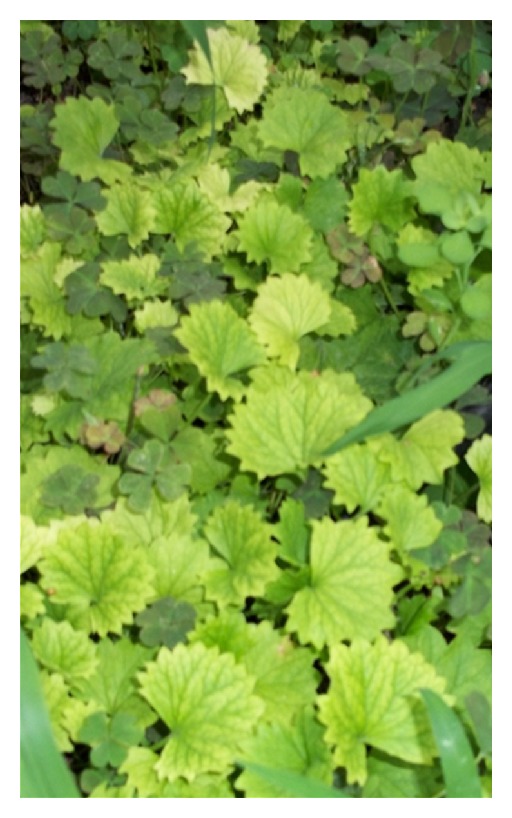
Gotu Kola is an old-world plant that's been around for centuries and is experiencing a rebirth in the nootropics community for its cognitive and mood-enhancing benefits.
Despite the growing popularity of nootropics this past decade, some of them have been around for thousands of years. One of them is the age-old plant, gotu kola, long known to boost mood and brain function:
What is Gotu Kola?
Gotu Kola is an incredibly versatile, nutrient-packed herb used throughout Southeast Asia as a natural remedy for a wide range of illnesses and diseases due to its high content of triterpenoids and carotenoids:[1]
-
Triterpenoids are secondary plant metabolites belonging to the saponin group of compounds that are regarded as phytoanticipins due to their antimicrobial activities. They also act as a defense against infectious pathogens that would attempt to harm the plant.
- Carotenoids are an organic pigment found in plants that can act as powerful antioxidants in the body, defending against chronic disease.
These compounds are believed to be the primary workhorses behind the numerous benefits of gotu kola.
A member of the Apiaceae family of plants, gotu kola is a green leafy vegetable that also contains all sorts of vitamins, minerals, flavonoids, polyphenols, and other phytonutrients, which is one of the primary reasons it has such a long history of use as a medicine. The plant is odor-free and ranges from mildly to slightly bitter.
Before going deeper, you can see all Gotu Kola products on PricePlow, or sign up for their price alerts below so you save with our price comparisons:
Gotu Kola – Deals and Price Drop Alerts
Get Price Alerts
No spam, no scams.
Disclosure: PricePlow relies on pricing from stores with which we have a business relationship. We work hard to keep pricing current, but you may find a better offer.
Posts are sponsored in part by the retailers and/or brands listed on this page.
What does it do?
Gotu Kola is primarily used for its mood-enhancing and cognitive-boosting properties. Among the many compounds that are naturally-occurring in the plant are asiatic acid and madecassic acid. These two compounds are triterpenoids believed be responsible for the majority of gotu kola’s benefits.
These two acids, and their corresponding glycosides, represent about 2% of the total plant weight and about 25% of the total triterpenoids found in gotu kola. There’s also ursolic acid and rosmarinic acid in the plant as well, and several other ginsenosides that aren’t even found in any species of ginseng! FYI, ginsenosides are natural product steroid glycosides and triterpene saponins believed to the responsible for the multitude of benefits that ginseng has to offer.[2]
That’s not quite everything the herb has to offer, though -- gotu kola has been shown to reduce anxiety, promote neurogenesis, reduce anxiety, and increase dendrite and axon growth in brain cells, which is something not easily accomplished in adults.[3,4,5,6]
For all these reasons, and more to come below, it’s easy to understand why Gotu Kola is referred to in Bali as the “student’s herb.”
Benefits of Gotu Kola
-
Improves Memory & Cognition
Perhaps the most well-known benefit of gotu kola supplementation is its ability to enhance cognition and improve memory. Research has shown that the plant extract bolsters memory at the molecular level by increasing activity of the ERK/RSK signaling pathway, pathway associated with long-term memory formation.[7]
Several other animal and human trials have shown the herb to improve cognition and reduce oxidative stress in the brain by decreasing brain levels of malondialdehyde (MDA, an important biomarker of oxidative stress) and significantly increasing levels of glutathione, a potent antioxidant.[8,9]
Due to gotu kola’s ability to stave off the decline in memory and cognition associated with aging, it’s been spotlighted as one of the best all natural, and alternative medicine, treatments for neurological diseases including Alzheimer’s.
-
Neuroprotection
As we mentioned up top, gotu kola has been shown to promote dendrite elongation, and protect neurons from apoptosis (cell death). Studies using both whole plant extract as well as individual compounds exert a protective effect against assorted neurological diseases. Most of research with respect to the neuroprotective effects of gotu kola have focused on Alzheimer’s disease, Parkinson’s disease, or cognitive decline induced by some sort of toxin/chemical.[10,11,12,20]
A few of the ways in which gotu kola has shown neuroprotective properties is due to enzyme inhibition, combatting dopamine neurotoxicity in Parkinson’s disease, prevention of amyloid plaque formation in Alzheimer's disease, and decreasing oxidative stress. Add it all together, and gotu kola might be one of those “must haves” for all of us as we age.
-
Neurogenesis
Figure 2: Representative micrographs of SH-SY5Y cells shown at 168 h after no treatment (A), treatment with NGF only (B), or treatment with NGF plus Centella asiatica ethanol extract GK2 (C), asiatic acid (D) or asiatic acid þ PD 098059 (E). Undifferentiated cells exhibit only short processes (A), whereas those differentiated with NGF demonstrate process elongation (B). Elongation is markedly increased by Centella asiatica ethanol extract (C) and asiatic acid (D). Note that the activity of asiatic acid is inhibited by the MEK inhibitor PD 098059 (E). The number of arrowheads is indicative of process length. Magnification 120.[13]
Neurogenesis is the creation or “birth” of new neurons in the brain. At one time, researchers believed it wasn’t possible for humans to grow new brain cells as they aged, but in fact Gotu Kola has been shown to increase the growth of neurons in a few different ways, including Nerve Growth Factor (NGF) and Brain-derived Neurotrophic Factor (BDNF).[13,14,15]
Plus, the fact that gotu kola enhances dendrite branching thereby strengthens communication between neurons and boosts brain plasticity.
-
Alleviates Anxiety
Anxiolytics are compounds commonly used to relieve symptoms of stress and anxiety. Several animal trials have demonstrated that supplementing with gotu kola decreases cortisol levels, which helps reduce stress.[16,17].
Human trials show reductions in anxiety (12–23%) and depression (10–21.8%) when giving patients 500mg gotu kola twice daily for 60 days.[18]. While another study conducted with the elderly reported reductions in anxiety as well as improvements in memory and mood.[19]
Additional Benefits
As always, the focus of this article is on the nootropic benefits of gotu kola, but we’d be remiss if we didn’t at least list the numerous other benefits this versatile supplement has to offer. Other benefits attributed to gotu kola include:
- Heal wounds and cellulite
- Prevents thrombosis
- Treat stomach ulcers
- Increase collagen production
- Prevent hair loss
- Treat herpes
- Slow tumor cell growth
Dosage
Most of the human research conducted on gotu kola has been on cognitive enhancers, therefore there is no “established” dose for proven cognitive boosting. However, rat studies have been done on cognition with the effective dose being in the 200-300mg/kg range. This gives a human equivalent dose of 32-48mg/kg bodyweight.
Based upon that, a general dosing strategy for gotu kola supplements tends to be on the order of:
-
Anxiety: 500mg gotu kola twice per day
-
Cognition & Memory: 2000 - 5000mg overall plant extract per day depending on your weight. For reference, the 5000mg dose is for people weighing 250lbs or more.
Also, worth noting is that at high doses gotu kola can act as a sedative, and it’s often advised against using gotu kola in combination with medications that are used to treat anxiety or sleep disorders.[21]
As always, speak with your physician before starting any new diet or supplementation program, and do not mix supplements with prescription drugs unless given their written consent.
Bioavailability
In vivo animal research notes that asiatic acid and madecassic acid, along with their analogs asiaticoside and madecassoside, have a bioavailability between 30 and 50%, this is somewhat on the low side, which means gotu kola could stand to benefit from some delivery technologies such as liposomes or cyclodextrins (or both).[22]
Toxicity / Gotu Kola Side Effects?
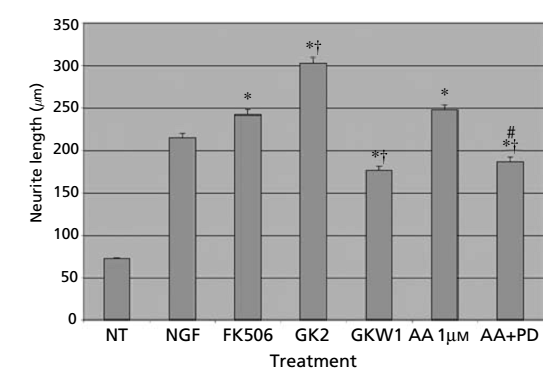
Figure 3 Mean values for neurite lengths obtained at 168h from SH-SY5Y cells in the presence of NGF, except no treatment (NT). Note that asiatic acid demonstrates significant activity, which is prevented by the MEK inhibitor PD 098059, demonstrating the involvement of the ERK pathway. In contrast, a water-soluble extract (GKW1) exhibits no positive activity, being significantly inhibitory of NGF’s activity.[13]
Generally speaking, gotu kola is pretty safe for most individuals. Human studies using a 300mg dose of gotu kola for 21 days found no side effects.[23] However, some people have reported experiencing low blood pressure, headache, dizziness, nausea, and/or drowsiness.
Additionally, a few case studies indicate potential liver damage in women, but there isn’t an overwhelming amount of evidence to suggest permanent liver damage from gotu kola supplementation.[24]. One rat study also note some damage to the testes (and testosterone production) as a result of gotu kola supplementation.[25]
The takeaway?
If you’re a normal, healthy individual with optimal liver function you should be ok using gotu kola, but if you have any pre-existing liver issues or diseases, it’s best to probably avoid it.
Time to get you some Gotu?
Gotu kola is an incredibly powerful and beneficial plant offering a wide variety of benefits to users. From neuroprotection to memory enhancement to improved mood and everything in between gotu kola is a very underrated nootropic that deserves a try at least once or twice in your biohacking journey.
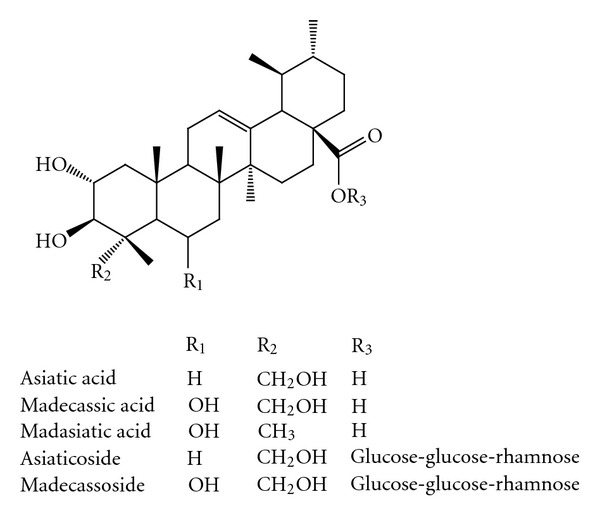
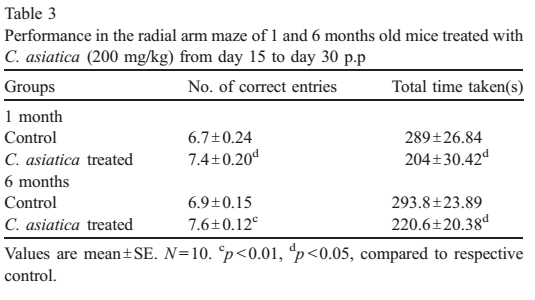
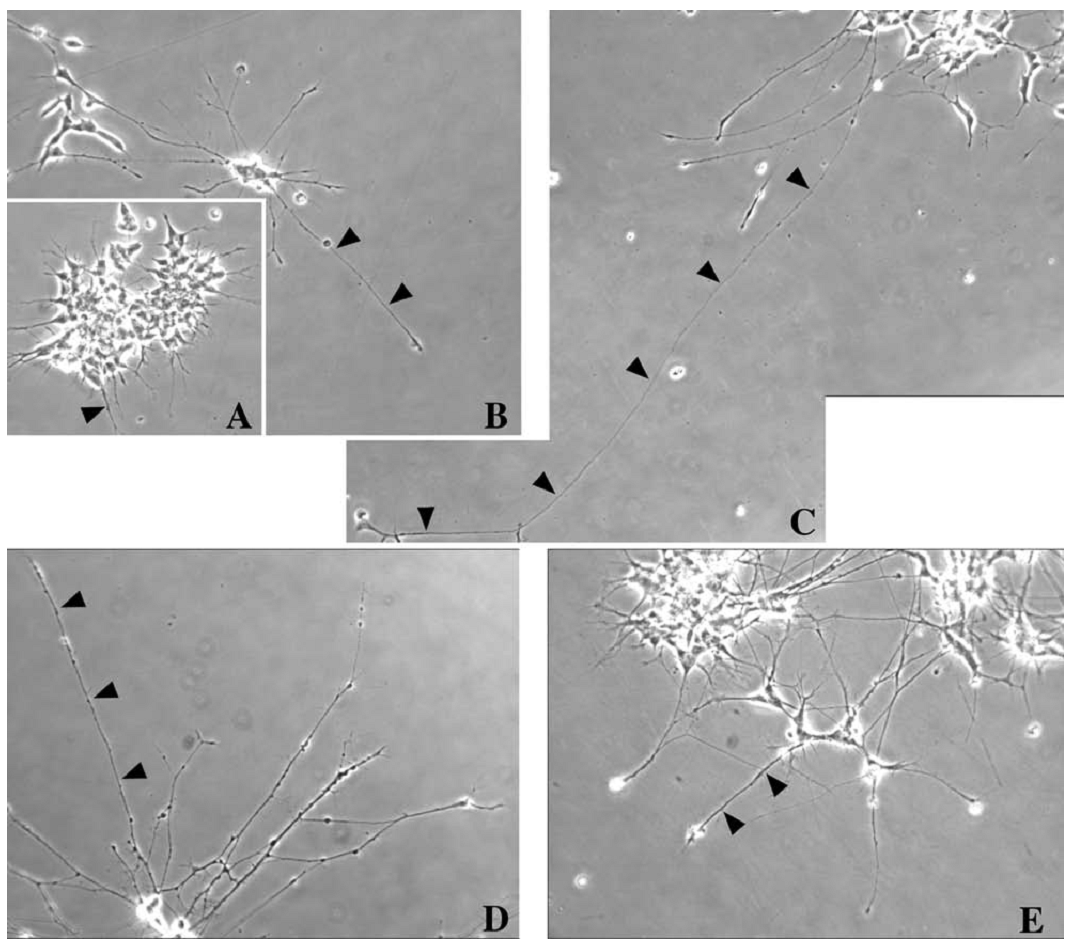
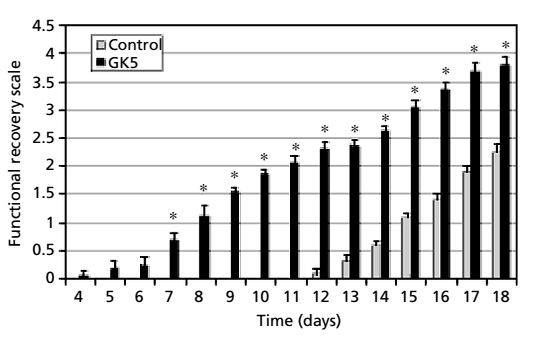


Comments and Discussion (Powered by the PricePlow Forum)